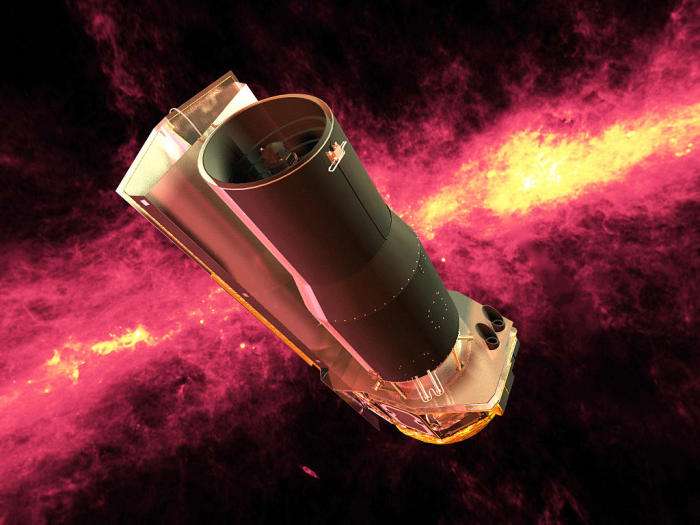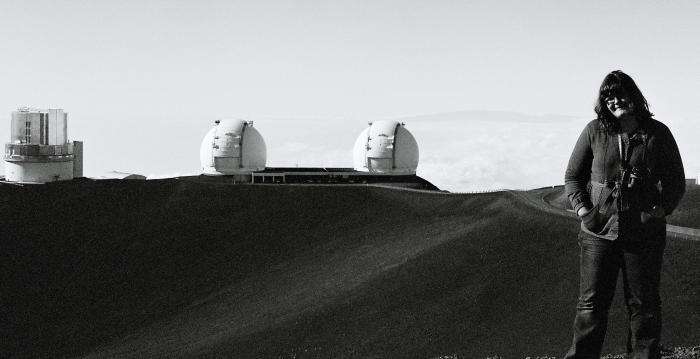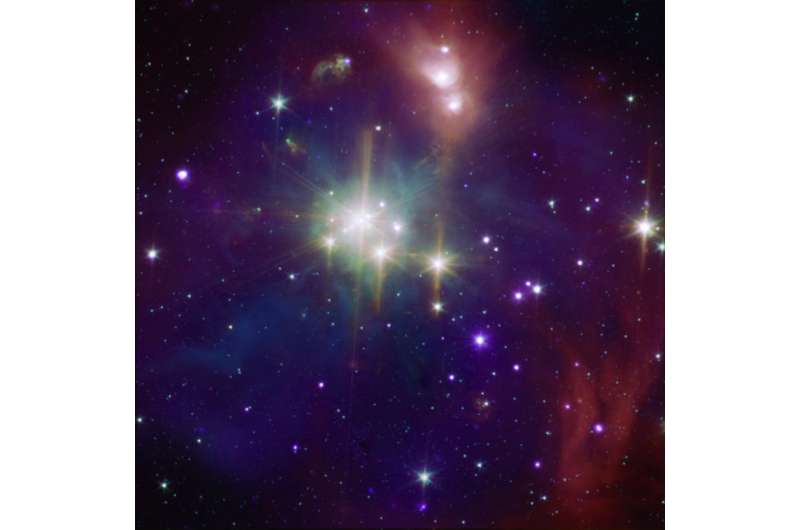Finding a needle in a space haystack

Stephanie Bernard is one in 24 million. The University of Melbourne PhD candidate is the only Australian given access to NASA's Spitzer Space Telescope, and she is using her time to explore one of the earliest galaxies in the universe.
Selected from hundreds of astrophysicists seeking access to the telescope for 12 months (beginning mid-2016), Ms Bernard is now analysing infrared signals from an ancient galaxy that could hold the secrets to how life developed in the universe.
"We're strongly focused on understanding how the first generation of stars formed," she says.
Scientists have dated the birth of the universe to about 13.8 billion years ago, when the Big Bang occurred. Ms Bernard and her supervisor, astrophysicist Dr Michele Trenti, from the School of Physics, have just received their first lot of data from Spitzer, and they are focused on a large galaxy – bigger than our own Milky Way – called 11153+0056_514, which formed sometime between 500 and 800 million years after the Big Bang.
"So what we're doing is going back 13 billion years in time," Ms Bernard says.
Just the process of finding a galaxy this old is a challenge, let along exploring its intricate details and origins.
"It's like a needle in a haystack; these galaxies are just a small patch in the sky, something like 150 to 200 times smaller than the moon," Dr Trenti says.
"We can search thousands of galaxies, and if we're lucky, there might be one that's 13 billion years in the past. And if you're after the brightest galaxies at the time, those are even rarer, because galaxies start forming small and then over time they grow and they often merge into much bigger galaxies."

Formerly known as the Space Infrared Telescope Facility, the powerful Spitzer Space Telescope is part of the NASA Great Observatories program.
It was later named after astronomer Lyman Spitzer, who in the 1940s advocated the concept of space telescopes.
The telescope was blasted into space in 2003 and NASA planned to operate it for two and a half years, possibly up to five.
Now, in its 13th year, Spitzer is still going strong, despite its original use-by-date having well and truly passed. While some of its original functions no longer work, because the telescope has run out of its liquid helium fuel, its two short wavelength infrared array cameras still operate.
And it is this infrared capability that makes access to Spitzer so important.
To use the telescope, Ms Bernard sends the coordinates of the galaxy to NASA, who then position the telescope to that area when there are enough other requests for data from that particular corner of the universe. Raw data is then emailed to Ms Bernard, who analyses it.
Ms Bernard and Dr Trenti found galaxy 11153+0056_514 using the better-known Hubble Space Telescope, but in order to explore its details further, they needed to see it in infrared, which cannot be seen with the human eye or Hubble.
Dr Trenti says seeing these galaxies in infrared is important because the universe is expanding. As the light from this galaxy travels towards us it loses energy, because space is stretched.
"These distant galaxies would have emitted high-energy UV light, but because the universe has grown approximately 10 times larger in the past 13 billion years, by the time this light reaches us, it has been stretched, and the energy is lower than what the human eye can see," Dr Trenti says.

Given Spitzer's age, and the fact the vastly more advanced James Webb Telescope – which will eventually replace both Hubble and Spitzer – is set to be launched in 2018, this was likely the last opportunity for Ms Bernard to use Spitzer.
The images that Spitzer has sent back to Earth over the past 13 years are spellbinding. Swirls of neon purple, green, red, blue and pink, contrasted against the darkest of black of the universe.
But it will still be some time before Ms Bernard and Dr Trenti can properly process all the data that will eventually create those stunning images. At the moment, their images look like large splotches, with no discernible detail.
But these splotches are fascinating to Ms Bernard and could hold some vital clues that could answer some of humankind's most profound questions.
"We have a basic idea of what this galaxy should look like and so we basically comb through this image and see if we can match it with these ideas of the galaxy," Ms Bernard says.
"Finding these first galaxies tells us a bit about what the universe was like at that time, because we can look at what the properties of the galaxy are, what sort of stars it has inside it and we can get an idea of how these processes we see in the universe today, like galaxies merging, all started."
Exploring the early universe and getting so close to the Big Bang is at the centre of Ms Bernard and Dr Trenti's research.
"It's really to address one of the most fundamental questions: where did we, humanity, come from?" Dr Trenti says.
"After the Big Bang, the universe was a pretty dull place; it was only hydrogen, helium and traces of maybe a few heavier elements such as lithium, but nothing else.
"With time, tiny fluctuations in these elements grow and gravity makes them collapse and you have the physical conditions that lead to the formation of the first generation of stars and galaxies. And those produce chemical elements through fusion processes and then you have the elements – carbon, oxygen, iron – that are necessary for life."
Provided by University of Melbourne




















